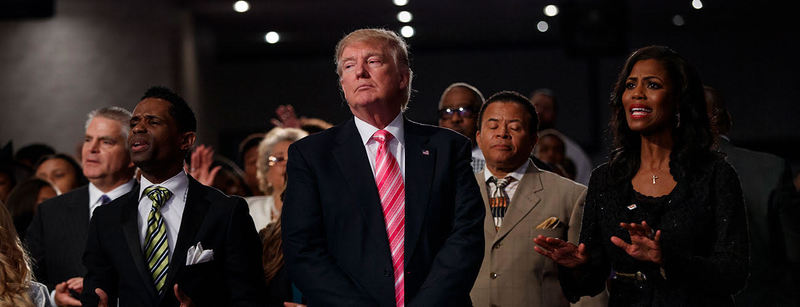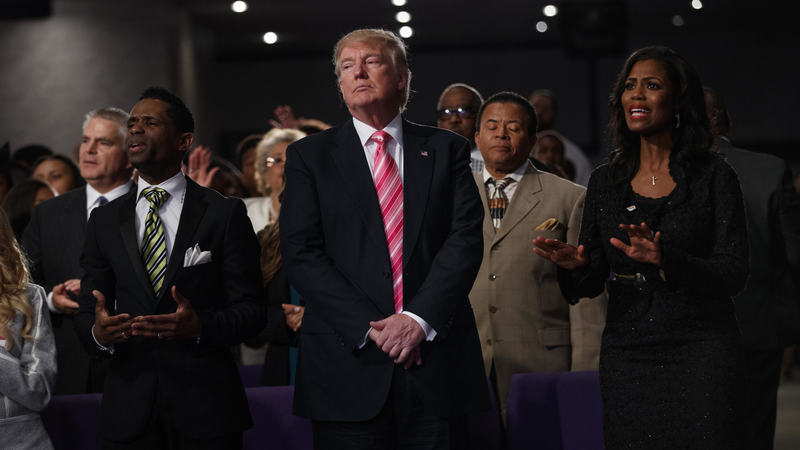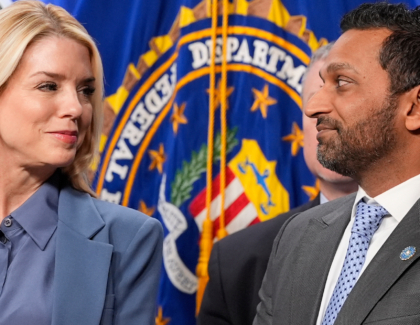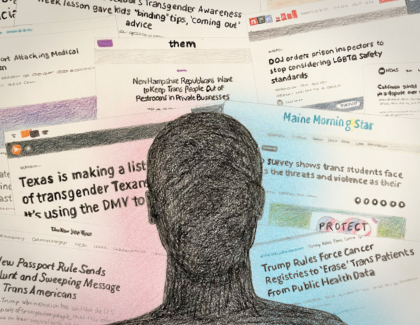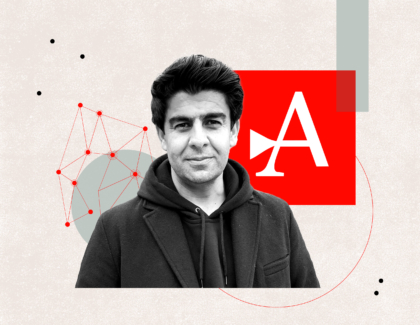Sign up for the daily CJR newsletter.
The 2016 presidential campaign has inspired a visual backlash to business as usual, targeting the typical posturing, rituals, and coronations.
From early on in the election cycle, staff photographers and freelancers have been challenging the campaign process at every turn, especially on Instagram and Twitter. It’s not just visual satire and irony, which were prevalent in large doses in 2008 and 2012. I’m talking about photos that channel the deep alienation felt by voters, as well as exploitation of that disaffection by candidates acting more angry, crass, and upset with the status quo. The results are hard-edged, aggressive, and cynical pictures that in other years either weren’t made or else never saw the light of day.
These photos expose the artifice and the political veneer, holding up the process and candidates to an unprecedented level of inspection, critique, and in some cases, a reciprocal dose of hostility. Here are seven photos that, if not for the unusual tone and atmosphere of this campaign, may not have been published.
This early campaign photo was taken by veteran campaign photographer Danny Wilcox Frazier and posted on his Instagram feed. What it actually shows is a Clinton question-and-answer session with reporters raising their hands to ask questions. Heavily criticized for her lack of press conferences, however, the way the photo is cropped gives the impression of finger pointing. Wilcox’s caption further intimates that interpretation. He writes:
Hillary Clinton takes questions from reporters, Cedar Falls, Iowa (May 19, 2015). In recent weeks, the media and Republican candidates have criticized Hillary Clinton for the limited number of questions she has taken since announcing her presidential campaign. The former Secretary of State had answered just 13 (by NPR’s count) before the impromptu press conference after her small business roundtable event in Iowa.
Related: Q&A: Journalist who broke Trump groping story on why others were slow to follow
Best of 2015: #Handgun @TedCruz head & @AP https://t.co/CZBj53fE7N pic.twitter.com/lAwzlyjiwq
— Reading The Pictures (@ReadingThePix) December 27, 2015
This image from a Ted Cruz campaign photo op, circulated by the AP, was taken on June 20, 2015, at a pro-gun, pro-Second Amendment event at an Iowa shooting club. For context, it’s important to understand the event occurred just three days after the mass murder at Emanuel African Methodist Episcopal Church in Charleston, South Carolina by a deranged young man, Dylann Roof, who was hoping to start a race war. Nine people were killed in the attack, including the senior pastor.
The photographer, Charlie Neibergall, took advantage of the position of the candidate, the angle, and a poster hanging on the wall. But it’s curious that such an aggressive photo was ever posted for use by wire-service members.
In my mind, the photo relays the campaign’s harsher mood. One could speculate it is also punishing Cruz for ignoring, and even exploiting, the church shooting, and the US culture of violence. I should also note the photo created a backlash from conservative sites, particularly Breitbart News, which unleashed an online barrage of criticism against AP. Whether the result of second thoughts, intimidation, or some combination, the newswire removed the photo, and four like it, from circulation.
Are we seeing new level of candidness from campaign photogs this yr? photo: Brooks Kraft https://t.co/PTOs81ufUf pic.twitter.com/A5hXwa3l20
— Reading The Pictures (@ReadingThePix) July 10, 2015
This is another example of a photo I don’t think would have been taken, or at least, not published, if not for the degree of voter frustration and alienation this year. Made by an experienced photojournalist and campaign veteran, Brooks Kraft, the photo was taken at a Hillary Clinton campaign event in Hanover, New Hampshire on July 3 and appeared in a Time slideshow, “Photographing the Presidential Campaign With an iPhone 6,” published on July 7, 2015.
In the photo, you can see the Clinton supporter (notice the sticker) sharing her thoughts, and perhaps speaking her mind, to Huma Abedin, Hillary Clinton’s close aide and vice chairwoman of her 2016 campaign. When one considers the symbolism of inclusion and authority, it’s interesting how the aide is outside the wall and the citizen occupies the higher ground and has to drop down to address the power. Even more telling, and defiant on the photographer’s part, is how much we are privy to Abedin’s apparent displeasure.
Related: Martha Raddatz and the case for a more assertive debate moderator
This photo by widely-published campaign freelancer Nate Gowdy (credits include Time and CNN) was published by Al Jazeera and also posted to his Instagram feed. It was taken at a town hall in Burlington, Vermont, on January 7, 2016.
With the Iowa Caucus fast approaching, the relationship between Trump, his opponents, and the media was growing more vitriolic. In this multiple exposure, Gowdy depicted key Trump behavioral traits: hyperactivity and impulsivity.
It should not be surprising that Donald Trump is the character who appears most in these photos. His campaign has channeled and also generated an enormous amount of polarization and provocation in the presidential cycle. This December 3, 2015, photo from Getty Images evoking a Nazi salute was actually taken during the Republican Jewish Coalition Presidential Candidates Forum in Washington.
Perhaps the most important point to make about photos like this: It’s an easy gesture to capture. Politicians stick out their hands constantly to acknowledge applause or to ask for quiet. If it’s a cheap shot, though, why did Getty publish it, and why did it run when it did?
Having enjoyed a considerable amount of attention as the campaign’s shiny new object and media novelty, it seemed clear by the end of 2015 that the public had reached a tipping point in its perception of Trump. Taken after calling for mosques to be surveilled and just before his call for a ban on Muslim immigration, the photo corresponded to increasing references to him as a demagogue. His speech, by the way, was laced with Jewish stereotypes, and was openly antagonistic toward the audience. He insisted for example, that the organization wouldn’t support him because he didn’t want their money.
This photo was taken during Trump’s visit to the Greater Faith Ministries Church in Detroit on September 3, 2016. While critics questioned his sincerity in light of his record of racial insensitivity, Trump made a multi-week attempt to ingratiate himself with the African-American voting block, scheduling several high-profile visits to black churches.
While most photographs captured Trump in more engaged or benign poses while the congregation was uniformly joined in spirited song, this AP photograph by Evan Vucci deigned to call out Mr. Trump for opportunism and self-interest. In the photo, Trump is framed as distant, disengaged and even calculating. The New York Magazine caption, in fact, is framed more like an accusation than a description. It reads:
Trump got his political start questioning the legitimacy of America’s first black president, and once defended his family’s real-estate business against federal discrimination charges.
This photo was taken by Landon Nordeman at the conclusion of the Republican Convention in Cleveland. Covering the campaign for Time, the freelance and well-known fashion photographer posted the image to his Instagram feed.
It was a parting shot at the conclusion of what many termed a chaotic, contentious, four-day Trump infomercial. Several other photographers posted versions of the same scene. Of course, there is an analogy to be drawn between the action in the photo and how Trump is expressing himself–making his mark on the campaign and country.
There are many more examples of campaign photos that tear at the curtain, expose the artifice, or refuse to collude with campaign protocol, gestures, and niceties. Certainly, voter disaffection with Trump and Clinton, cynicism around Campaign 2016 in general, and ongoing gridlock in Washington suggests this defiant and undermining tone in the visual coverage might endure beyond Election Day.
Has America ever needed a media defender more than now? Help us by joining CJR today.



